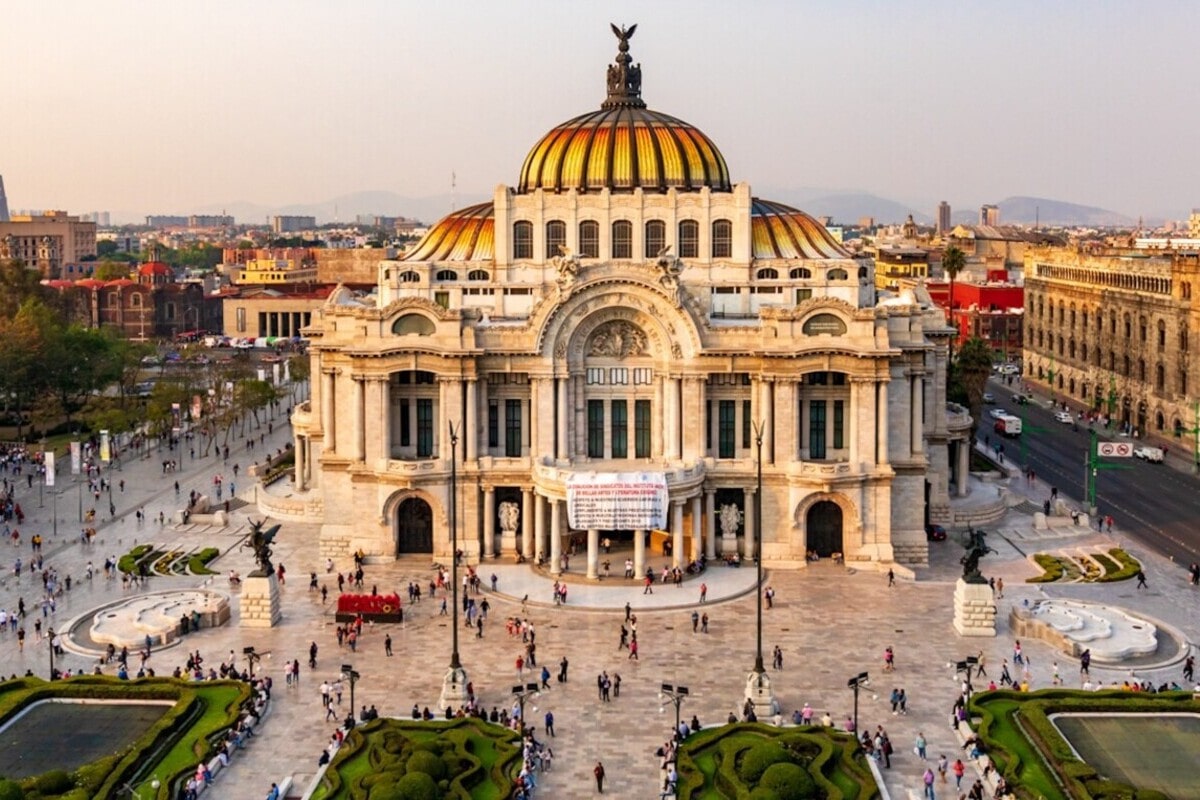Mexico City is not just the capital of Mexico, but a true metropolis where ancient culture and modern urban life intertwine. The city impresses with its vast size, rich history, stunning architecture, and vibrant contrasts. Its streets echo with the legacy of Aztec civilization, while also serving as the backdrop for global business and cultural innovation. These interesting facts about Mexico City will reveal remarkable aspects of this fascinating urban center that you may not have known. Discover more about its records, surprises, and unique characteristics.
- Mexico City is located at an elevation of over 2,200 meters above sea level, making it one of the highest capital cities in the world. This altitude affects the local climate, keeping temperatures mild even during the hottest months. Tourists may enjoy pleasant weather but might also experience some difficulty adjusting to the thinner air.
- It is one of the most populous cities in the world. The metropolitan area of Mexico City is home to more than 22 million people. This massive population makes the city a hub of cultural and economic activity.
- The historic center of Mexico City was built on the ruins of Tenochtitlan, the ancient capital of the Aztec Empire. In 1325, the Aztecs founded the city based on a legend involving an eagle holding a snake atop a cactus. This image later became the national symbol and is featured on the Mexican coat of arms.
- The city is gradually sinking due to geological factors. It was originally built on a lakebed, which has since been drained and developed, resulting in soft, unstable ground. Some areas of the city sink several centimeters each year.
- With over 150 museums, Mexico City is one of the leading cities in the world in terms of museum count. Notable institutions include the National Museum of Anthropology and the Frida Kahlo House Museum. The city is a paradise for lovers of history, art, and science.
- The Zócalo, or Constitution Square, is the largest plaza in Latin America and lies at the heart of the city. Though its official name is Constitution Square, locals commonly refer to it as the Zócalo. It hosts major events, public demonstrations, concerts, and national ceremonies.
- Mexico City has one of the oldest metro systems in Latin America, launched in 1969. The system has 12 lines and ranks third in passenger traffic on the continent. Low fares make it an affordable and popular mode of transport for residents.
- The canals of Xochimilco, remnants of the Aztec era, still exist in the city. These unique waterways, with their floating gardens, now serve as a popular tourist attraction. A ride on colorful boats through the canals is one of the city’s iconic experiences.
- Mexico City is the only city in the world where some school subjects are officially taught in Nahuatl, the language of the Aztecs. This helps preserve indigenous culture and linguistic heritage. Government programs support the revival of native languages.
- Air pollution was a serious issue for many years in Mexico City. In the 1980s, smog levels reached dangerous highs, but thanks to environmental policies, the situation has improved significantly. Today, the city is often cited as a success story in urban pollution control.
- The city has a vibrant food culture, especially known for its street food like tacos, tamales, and churros. Many local chefs are ranked among the best in Latin America. The culinary scene draws both locals and tourists looking for authentic flavors.
- The world’s largest Day of the Dead parade takes place in Mexico City. Each year in early November, the streets fill with colorful costumes, giant skeletons, music, and dancing. The celebration honors ancestors and is a powerful expression of Mexican cultural identity.
- Mexico City has served as a filming location for major Hollywood productions, including scenes from several James Bond films. One memorable scene from “Spectre” was filmed during the Day of the Dead parade. Due to the movie’s popularity, the parade became an annual public event.
- The city is home to the largest university in Latin America, the National Autonomous University of Mexico (UNAM). Its campus is a UNESCO World Heritage Site due to its exceptional blend of architecture and art. Education at the university is free, attracting students from across the country.
- Mexico City is one of the oldest cities in North America, founded in the 15th century. After the Spanish conquest, it quickly became the administrative center of colonial rule. Today, the city preserves architecture from various eras, from pre-Columbian temples to baroque churches.
These incredible and interesting facts about Mexico City help us better understand the unique nature of this sprawling metropolis. It blends traces of ancient civilizations with the energy of modern life, multicultural richness with historical continuity. Mexico City is not just a capital, but a world unto itself that is worth visiting at least once in a lifetime. It is one of the most captivating cities you may not have known so well before.





